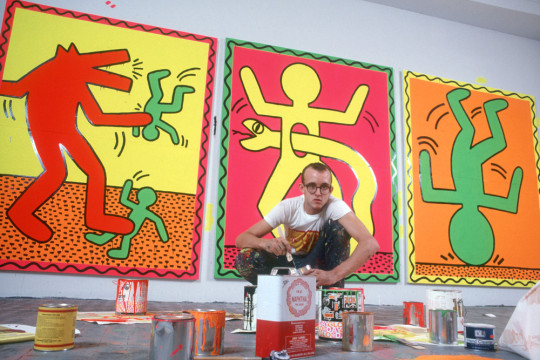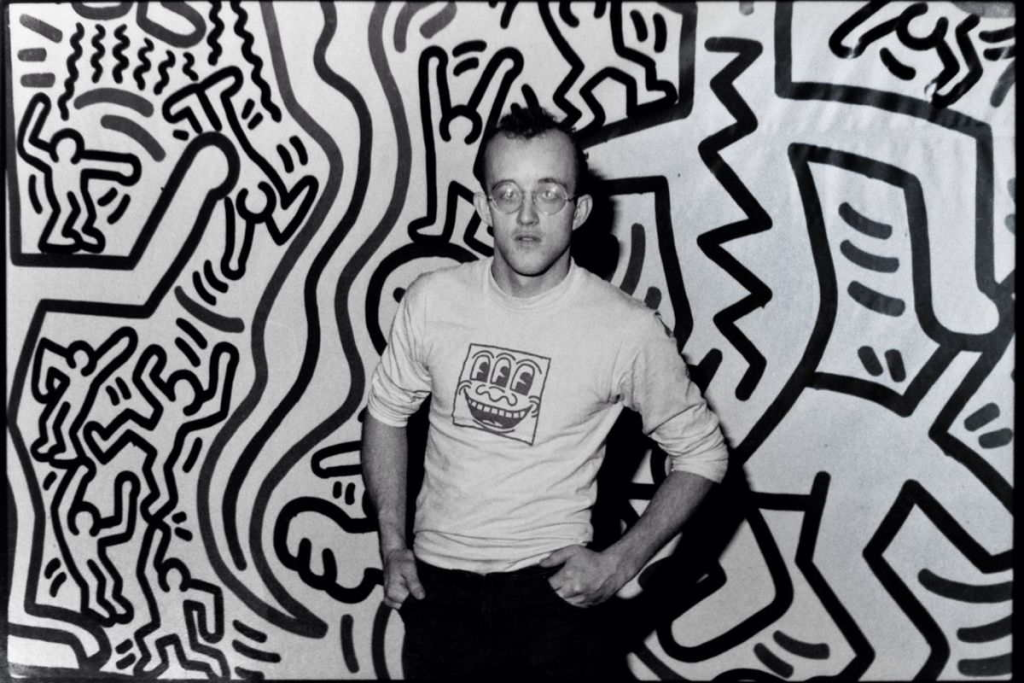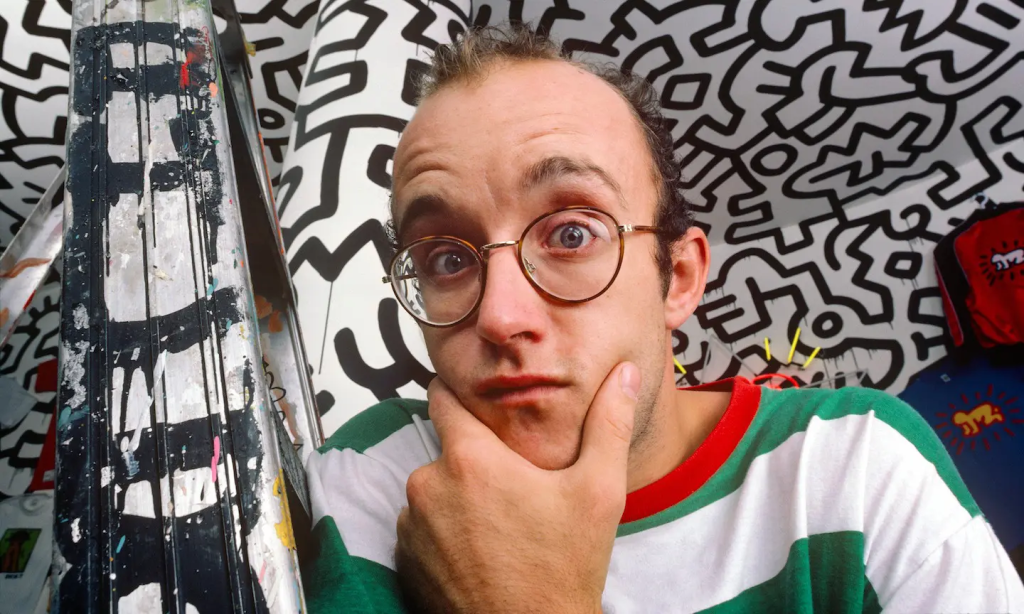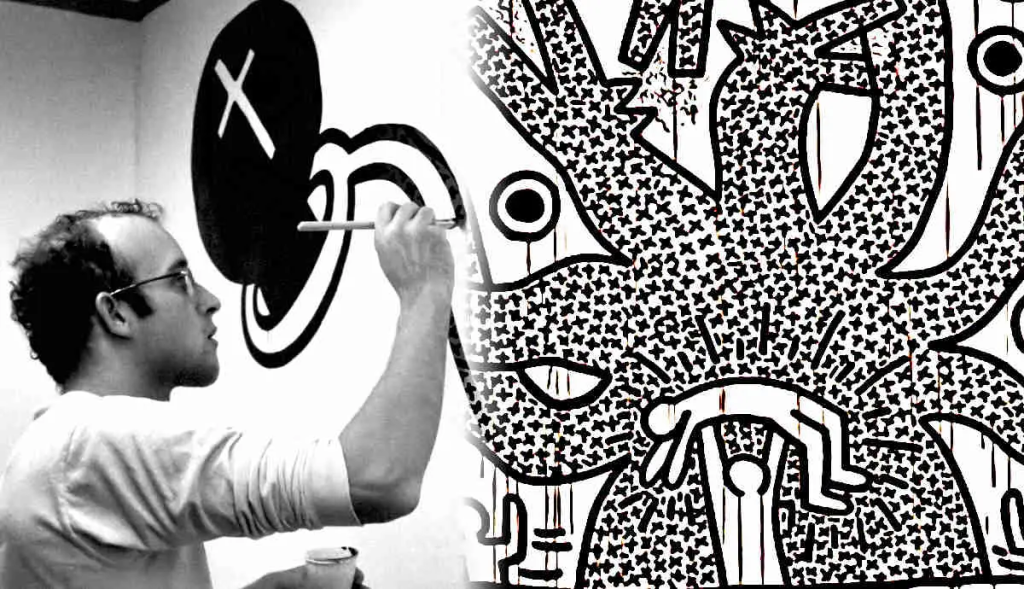Keith Haring, a pioneering artist in the contemporary art scene of the 1980s, left an indelible mark on the world with his vibrant and socially conscious creations. Beyond his artistic contributions, questions often arise about the financial aspects of his career, prompting exploration into Keith Haring’s net worth.
This article delves into the life and legacy of the iconic artist, shedding light on his artistic endeavors and the financial dimensions of his short but impactful career.
The Early Life and Artistic Journey of Keith Haring
Keith Haring was born on May 4, 1958, in Reading, Pennsylvania. From an early age, he displayed a keen interest in art, which eventually led him to move to New York City in 1978 to attend the School of Visual Arts.

In the vibrant art scene of New York during the 1980s, Haring found his voice as a street artist, using the city’s subway stations and public spaces as his canvas.
Haring’s Net Worth: Unraveling the Financial Landscape
Determining Keith Haring’s net worth at his 1990 death is challenging due to street art’s undervaluation, limited financial records, and posthumous value increase. Haring’s philanthropic focus and the public nature of his work contribute to this difficulty. His net worth could be anywhere between $1-10 million based on estimations.

However, indicators of financial success include lucrative commercial collaborations with brands, significant gallery sales, and recent auction prices ranging from millions to tens of millions of dollars. While his personal wealth remains unclear, these factors underscore the enduring and increasing value placed on Haring’s artistic legacy.
Subway Drawings and Popularity Surge
Haring gained initial recognition for his subway drawings, characterized by bold lines, vivid colors, and simple yet powerful symbols.

His work, often infused with social and political commentary, quickly caught the attention of passersby and fellow artists. The simplicity of his imagery and its accessibility contributed to the rapid rise of his popularity.
The Pop Shop and Commercial Success
In 1986, Keith Haring opened the Pop Shop in downtown Manhattan, a store that featured his art on various merchandise, from T-shirts to posters. This move marked a significant intersection of Haring’s artistic vision and commercial success. The Pop Shop allowed a broader audience to engage with his work beyond traditional gallery spaces, contributing to the democratization of art.

Beyond commercial ventures, Haring’s art often addressed social issues, including AIDS awareness, apartheid, and the crack cocaine epidemic. His public art projects, such as the iconic “Crack is Wack” mural in Harlem, served as powerful statements that transcended the confines of traditional galleries. Haring’s commitment to social activism became an integral part of his artistic identity.
Gallery Sales and Auctions
Gallery sales constitute a significant portion of an artist’s income, and Haring’s works were sought after by collectors. Posthumously, Haring’s art has continued to command high prices at auctions, reflecting the enduring demand for his pieces. The rarity and cultural significance of his work contribute to the appreciation of its financial value.

The Pop Shop, while a testament to Haring’s desire to make art accessible, also served as a lucrative commercial venture. The sale of merchandise featuring his iconic imagery added a substantial revenue stream to Haring’s financial portfolio. The balance between commercial success and artistic integrity was a delicate yet impactful aspect of Haring’s career.
Legacy Foundations and Charitable Contributions
Haring’s commitment to social causes extended to philanthropy. The Keith Haring Foundation, established in 1989, focuses on supporting organizations addressing issues related to children’s programs, AIDS research, and the arts. While the foundation’s primary goal is philanthropy, its financial activities contribute to shaping Haring’s legacy and impact on various causes.
The Impact of Keith Haring’s Legacy
Keith Haring’s legacy extends far beyond monetary considerations. His influence on contemporary art, popular culture, and social activism resonates to this day.

The enduring relevance of his work ensures continued interest from collectors, museums, and enthusiasts, contributing to the sustained appreciation of Haring’s artistic and financial legacy.
Conclusion
Keith Haring’s net worth, though challenging to quantify precisely, reflects the multifaceted nature of his career. From his early days as a subway artist to the establishment of the Pop Shop and beyond, Haring navigated the intersection of art and commerce with a unique blend of creativity and social consciousness.
While financial success played a role in his career, Haring’s lasting impact on the art world and society at large remains immeasurable. As his works continue to captivate audiences and command attention at auctions, Keith Haring’s legacy persists, transcending monetary value to underscore the profound influence of his artistic vision.
Related Stories:
- Jerry Saltz Net Worth: Art Critic Extraordinaire And His Impressive Riches
- Alyssa Milano Net Worth: A Storied Career, Philanthropy, and Impressive Riches
Despite being a student and an athlete, Sachin never lets himself be confined merely to sports or academics and rightly shows vivid interest in work behind the lenses thus, making him the right fit for being a content creator at Landscape Insight. He serves the website with various reports from the entertainment industries right from web series to movies. When not found writing, he enjoys listening to music and playing video games.
You can reach him at [email protected] or through our website’s contact page.








